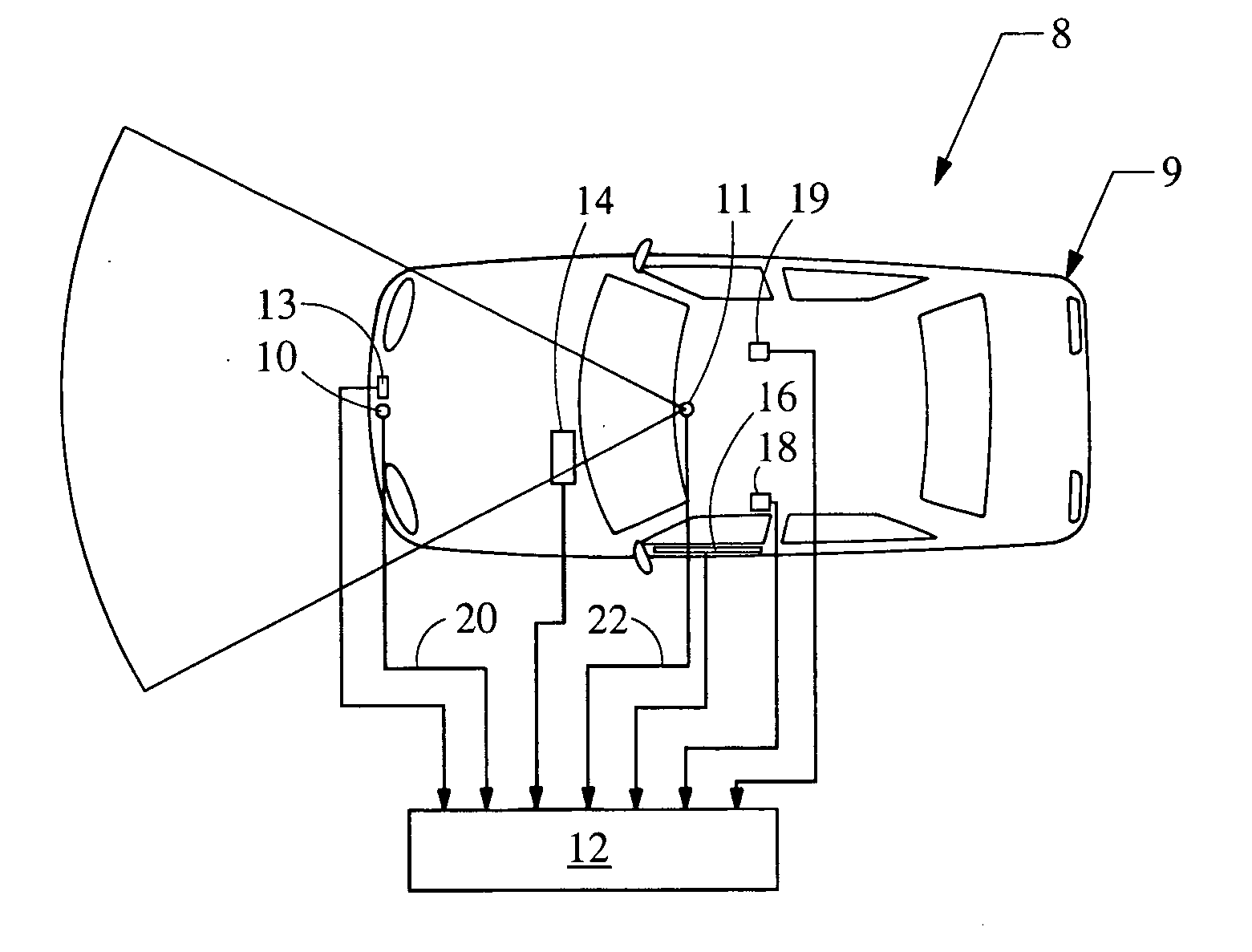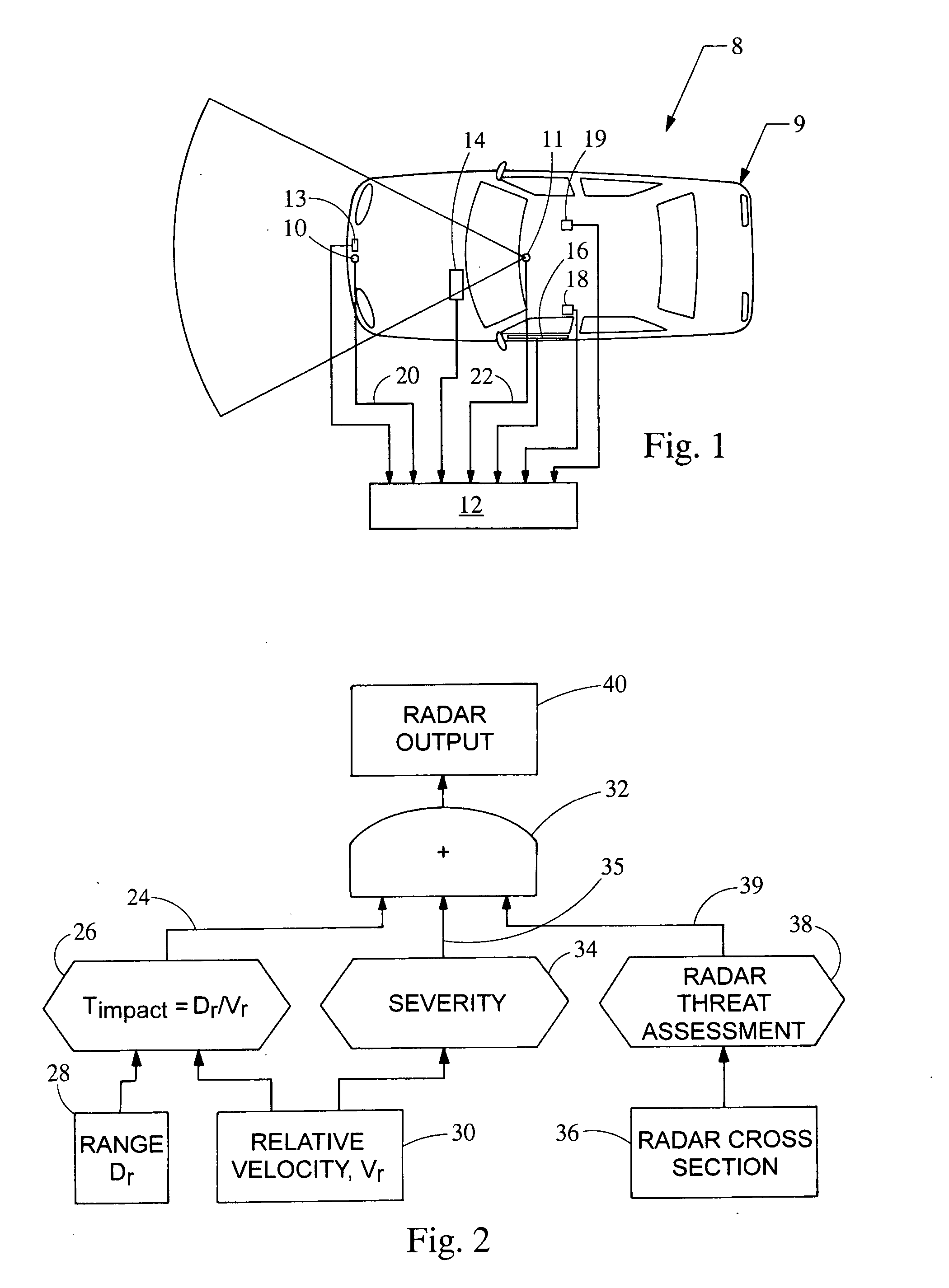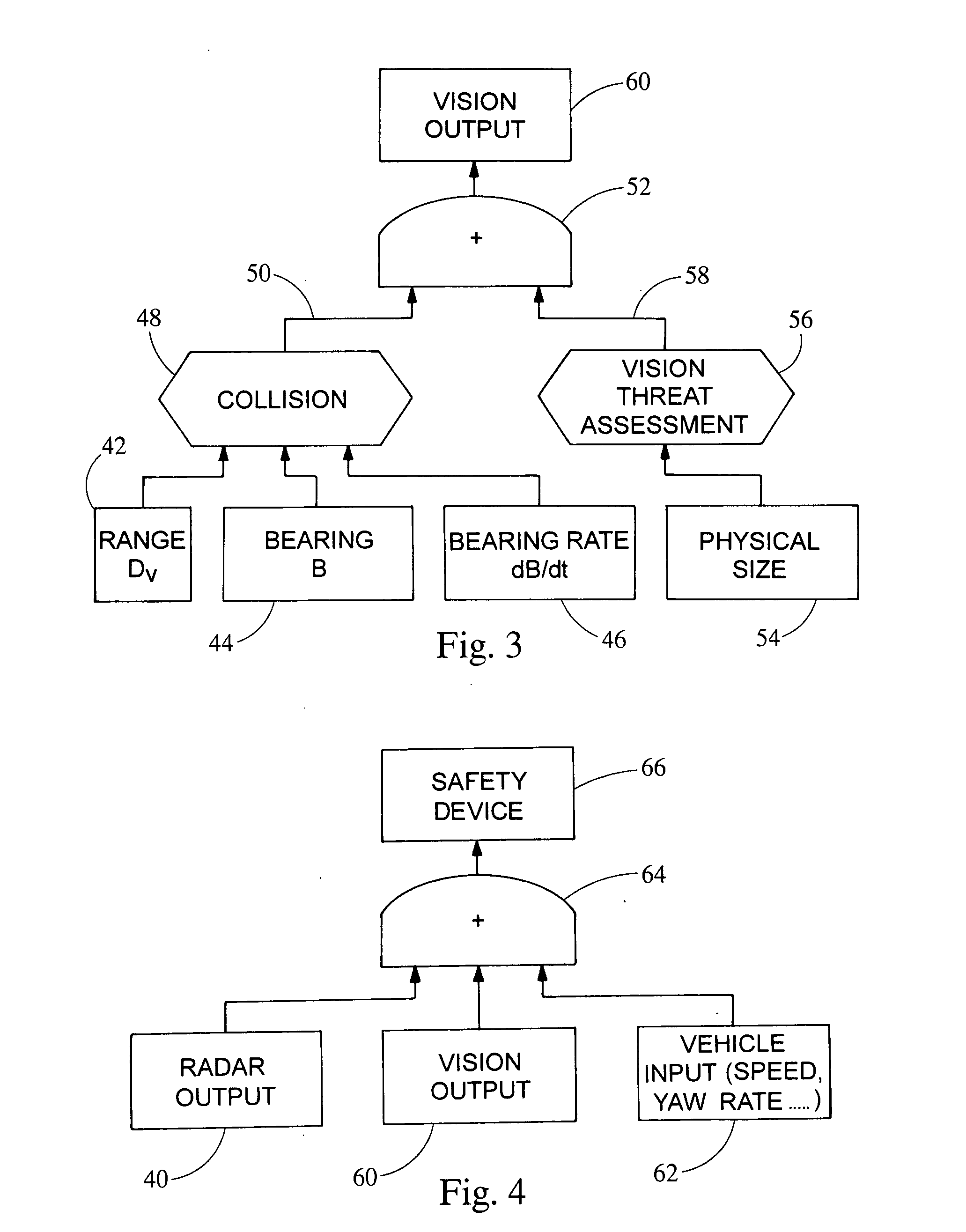System for sensing impending collision and adjusting deployment of safety device
a safety device and impending collision technology, applied in the direction of pedestrian/occupant safety arrangement, reradiation, instruments, etc., can solve the problems of significant motor vehicle fatalities annually, inadvertent deployment is not only costly, but may temporarily disable the vehicle, etc., to reduce the potential of injury, the effect of slowing down the ra
- Summary
- Abstract
- Description
- Claims
- Application Information
AI Technical Summary
Benefits of technology
Problems solved by technology
Method used
Image
Examples
Embodiment Construction
[0018] Now referring to FIG. 1, a system 8 is shown with an associated vehicle 9. The system 8 is configured for a forward looking application. However, the system 8 can be configured to look rearward or sideways with the same ability to sense an approaching object and prepare the vehicle 9 for the crash. In a side-looking, or rearward looking application, the sensors would have overlapping fields of view, as shown in the forward looking application in FIG. 1.
[0019] The sensor system 8 includes a radar sensor 10 which receives a radio frequency signal, preferably in the microwave region emanating from an antenna (not shown). Radar sensor 10 provides radar output 20 to an electronic control module (ECM) 12. A vision sensor 11 is preferably mounted to an upper portion of the vehicle 9, such as, along the windshield header aimed forward to provide vision information. Vision sensor 11 provides vision output 22 to an ECM 12. The ECM 12 combines radar output 20 and the vision output 22 t...
PUM
 Login to View More
Login to View More Abstract
Description
Claims
Application Information
 Login to View More
Login to View More - R&D
- Intellectual Property
- Life Sciences
- Materials
- Tech Scout
- Unparalleled Data Quality
- Higher Quality Content
- 60% Fewer Hallucinations
Browse by: Latest US Patents, China's latest patents, Technical Efficacy Thesaurus, Application Domain, Technology Topic, Popular Technical Reports.
© 2025 PatSnap. All rights reserved.Legal|Privacy policy|Modern Slavery Act Transparency Statement|Sitemap|About US| Contact US: help@patsnap.com



